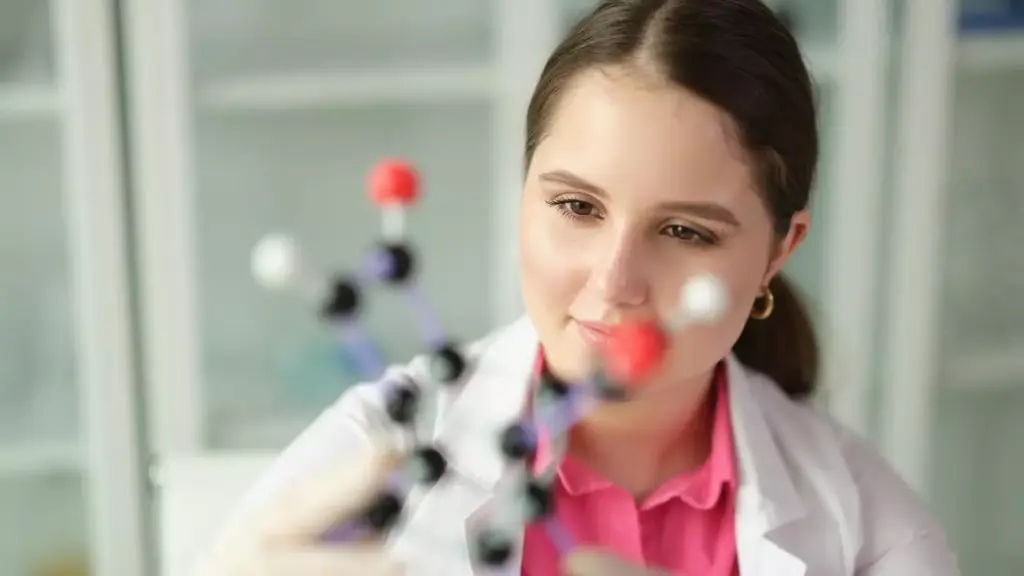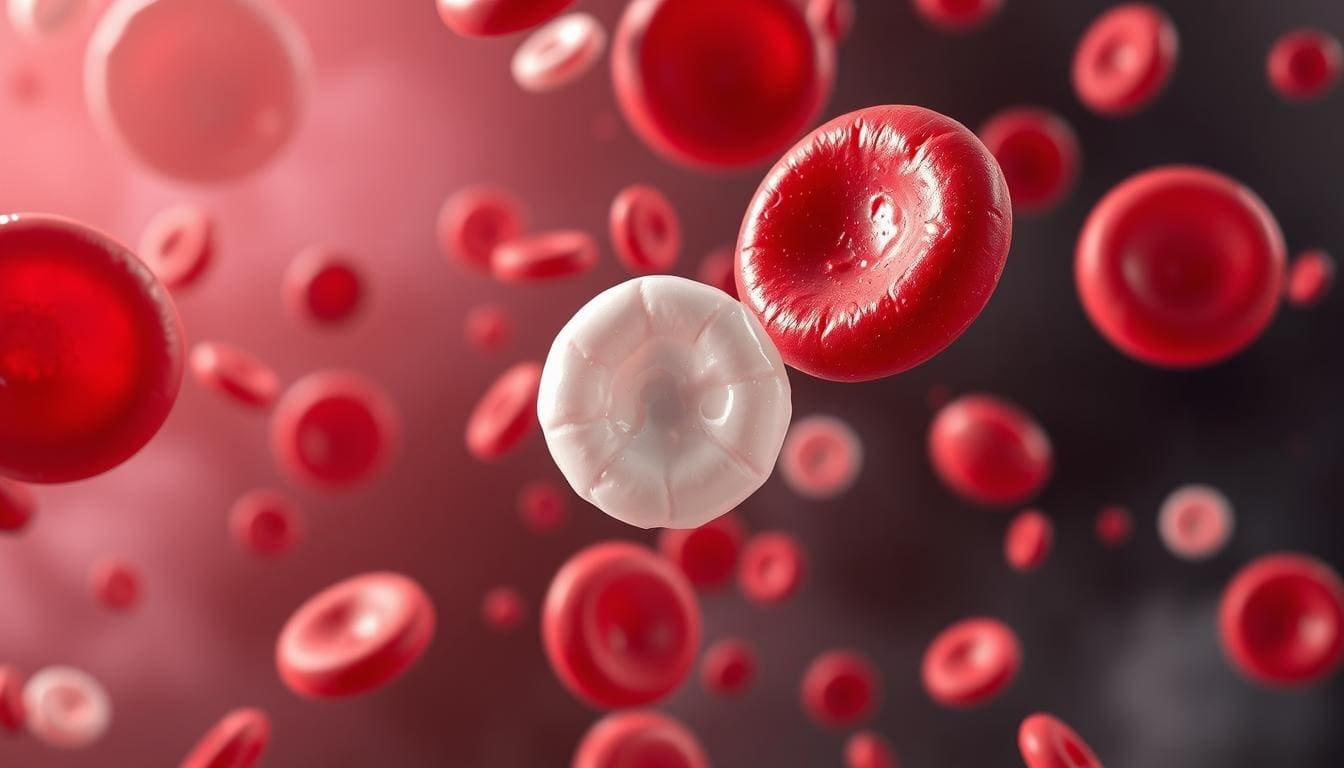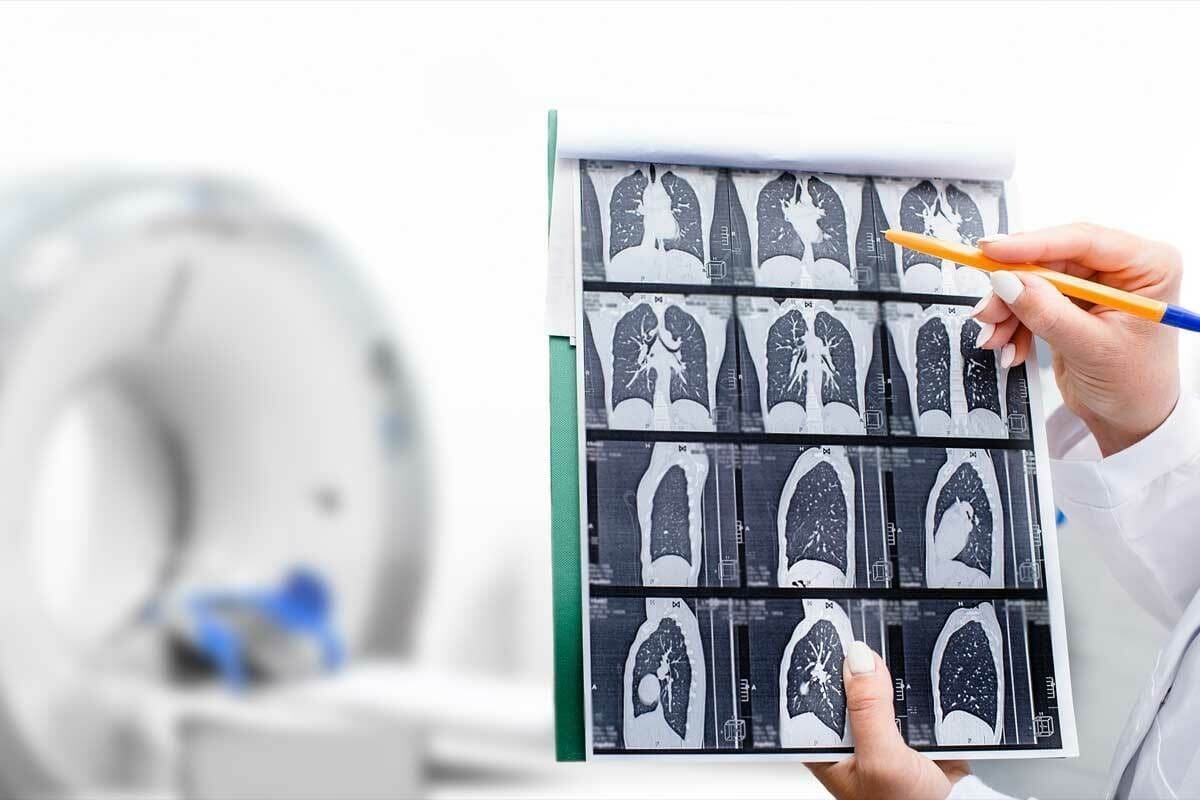Last Updated on November 27, 2025 by Bilal Hasdemir

We are seeing big changes in breast carcinoma treatment. These changes come from new ways of treating cancer and better understanding of the disease.
In 2025, women with breast cancer have many new treatment options. These options are made just for them, making treatment better and giving them hope.
The move to personalized medicine is changing how we treat cancer. We use special tests and treatments to help each patient in their own way.
Key Takeaways
- Personalized medicine is revolutionizing breast carcinoma treatment.
- Targeted therapies offer new hope for women with breast cancer.
- Molecular profiling is key to effective treatment planning.
- 2025 brings innovative treatment options for women.
- Improved patient outcomes are a result of tailored treatment approaches.
The Current State of Breast Carcinoma Treatment in 2025
In 2025, breast carcinoma treatment is moving towards a more personalized approach. This change is thanks to molecular profiling and targeted therapies. These tools help doctors tailor treatments to each patient’s needs.
The Shift from One-Size-Fits-All to Precision Medicine
Precision medicine is changing how we treat cancer. It lets doctors create treatments based on a patient’s unique genetic makeup. This has led to better results for patients, as treatments fit their disease better.
The way we treat breast cancer is changing. We’re focusing more on precision medicine. This is thanks to better molecular profiling, which helps find specific genetic markers in cancer.
Role of Molecular Profiling in Treatment Selection
Molecular profiling is key in choosing treatments for breast carcinoma. It helps doctors find the best treatment by looking at a tumor’s genetics. This makes treatments more effective and reduces side effects.
Using molecular profiling in treatment selection is a big step forward. It makes care more personal, leading to better results and a better life for patients.
Key Advancements Transforming Patient Outcomes
Several important advancements are changing how we treat breast carcinoma. These include new targeted therapies, better diagnostic tools, and the use of immunotherapy.
- New targeted therapies offer hope for patients with certain genetic mutations.
- Better diagnostic tools help catch cancer early and diagnose it more accurately.
- Immunotherapy is showing promise as a treatment for some breast cancers.
These advancements are improving patient outcomes. They make treatments more effective and enhance the quality of life for those with breast carcinoma.
Treatment Option 1: Oral Selective Estrogen Receptor Degraders (SERDs)
Oral Selective Estrogen Receptor Degraders (SERDs) are a new hope in fighting breast cancer. They work by targeting and breaking down estrogen receptors. These receptors play a big role in hormone receptor-positive breast cancer.
Camizestrant (AstraZeneca): First Next-Generation SERD with Phase 3 Success
Camizestrant, made by AstraZeneca, is the first SERD to succeed in Phase 3 trials. This new treatment has shown real benefits, helping patients with ESR1 mutations a lot.
Camizestrant works by breaking down estrogen receptors. This stops estrogen from making breast cancer cells grow. The Phase 3 trial showed it made patients live longer without their cancer getting worse.
Imlunestrant (Eli Lilly): Mechanism and Clinical Benefits
Imlunestrant, from Eli Lilly, is another Oral SERD getting attention. Imlunestrant is designed to target estrogen receptors better, aiming for better results and safety.
Tests on imlunestrant have shown good results. Patients are living longer without their cancer getting worse. Its ability to break down estrogen receptors makes it a great option for hormone receptor-positive breast cancer.
Elacestrant for ESR1-Mutant Metastatic Disease
Elacestrant is being studied for ESR1-mutant metastatic breast cancer. ESR1 mutations are a big challenge in advanced breast cancer, and elacestrant is a promising solution.
Studies show elacestrant gives big benefits to patients with ESR1-mutant metastatic disease. Its success in this area shows Oral SERDs could meet big needs in breast cancer treatment.
| Oral SERD | Developer | Mechanism of Action | Clinical Benefits |
|---|---|---|---|
| Camizestrant | AstraZeneca | Degradation of estrogen receptors | Improved progression-free survival, special benefits in ESR1 mutations |
| Imlunestrant | Eli Lilly | Targeted degradation of estrogen receptors | Better results and safety |
| Elacestrant | – | Targeting ESR1 mutations | Big benefits in ESR1-mutant metastatic disease |
Oral SERDs are a big step forward in breast cancer treatment. With drugs like camizestrant, imlunestrant, and elacestrant, the future looks brighter. These treatments offer better results and more targeted options, improving patients’ lives.
Treatment Option 2: Advanced CDK4/6 Inhibitor Therapies
Advanced CDK4/6 inhibitor therapies are changing how we treat breast cancer. They target specific cell cycle mechanisms, showing great promise in improving patient outcomes.
We’re seeing a big change in treating hormone receptor-positive breast cancer with next-generation CDK4/6 inhibitors. These new therapies aim to beat resistance and work better.
Next-Generation CDK4/6 Inhibitors with Improved Efficacy
New CDK4/6 inhibitors are being made to fix the issues of older ones. They show better safety and effectiveness in clinical trials.
A study on a new CDK4/6 inhibitor found a big boost in how long patients stay cancer-free when used with hormone therapy. This shows these advanced treatments could become the new standard.
“The development of next-generation CDK4/6 inhibitors represents a significant advancement in the treatment of breast cancer, providing patients with more effective and tolerable options.”
Novel Combination Strategies with Endocrine Therapy
Using CDK4/6 inhibitors with hormone therapy is key for hormone receptor-positive breast cancer. New ways to combine these treatments are being explored to improve results.
A recent trial looked at mixing a CDK4/6 inhibitor with a new hormone therapy. The results were very promising, showing good safety and effectiveness.
| Combination Therapy | PFS (Months) | ORR (%) |
|---|---|---|
| CDK4/6 Inhibitor + ET | 24.5 | 55 |
| CDK4/6 Inhibitor + Novel ET Agent | 30.2 | 62 |
Overcoming Resistance Mechanisms
One big challenge in treating breast cancer is beating resistance to current treatments. New CDK4/6 inhibitors aim to tackle this by targeting specific resistance ways.
Early results from trials on next-generation CDK4/6 inhibitors in resistant patients are encouraging. They show these new treatments could be a game-changer.
The future of breast cancer treatment is about beating resistance and giving more effective, tailored therapies.
Treatment Option 3: Targeted Therapies for HER2-Positive Breast Carcinoma
Targeted therapies have changed the game for HER2-positive breast carcinoma. They offer hope to patients by focusing on the HER2 proteins in cancer cells. This reduces harm to healthy cells.
Next-Generation Antibody-Drug Conjugates
Next-generation antibody-drug conjugates (ADCs) are a big step forward in treating HER2-positive breast cancer. ADCs combine the precision of antibodies with the power of chemotherapy drugs. They deliver the drug right to the cancer cells. This method has shown improved efficacy and reduced side effects compared to old chemotherapy.
Tyrosine Kinase Inhibitors for Brain Metastases
Tyrosine kinase inhibitors (TKIs) are being looked at for treating brain metastases in HER2-positive breast cancer. These inhibitors can get past the blood-brain barrier, making them effective against brain tumors. Early trials suggest they could improve patient outcomes.
Dual HER2-Targeting Approaches
Dual HER2-targeting approaches combine different therapies to target the HER2 protein in different ways. This method has shown promise in better treatment results. The benefits include enhanced efficacy and reduced resistance.
| Therapy Type | Mechanism of Action | Clinical Benefit |
|---|---|---|
| Next-Generation ADCs | Deliver cytotoxic drugs directly to HER2-positive cancer cells | Improved efficacy and reduced side effects |
| Tyrosine Kinase Inhibitors | Inhibit signaling pathways involved in cancer cell growth | Effective against brain metastases |
| Dual HER2-Targeting Approaches | Target HER2 protein through multiple mechanisms | Enhanced treatment outcomes |
By adding these targeted therapies to treatment plans, we can greatly improve outcomes for HER2-positive breast carcinoma patients. It’s vital to keep researching and developing new targeted therapies to better care for patients.
Treatment Option 4: Immunotherapy Innovations for Triple-Negative Breast Cancer
Immunotherapy is changing how we treat triple-negative breast cancer. It makes treatments more effective and improves patient results. New ways to fight this tough cancer are being developed.
Checkpoint Inhibitor Combinations
Checkpoint inhibitors are showing great promise in fighting triple-negative breast cancer. By mixing different inhibitors, doctors aim to boost the immune system’s fight against cancer. This has led to better results in trials, giving hope to those with this aggressive cancer.
Using checkpoint inhibitors with other treatments, like chemotherapy, also shows promise. This mix can help overcome the problems of single treatments. It leads to a stronger fight against tumors.
Novel Immunotherapy Agents in Clinical Practice
New immunotherapy agents are being tested for triple-negative breast cancer. These include different types of treatments that target the immune system in various ways. This variety is key for dealing with the different types of triple-negative breast cancer.
Studies are underway to check if these new agents are safe and work well. The results of these trials will be key in shaping future treatments for triple-negative breast cancer.
Vaccine-Based Approaches
Vaccine-based treatments are another exciting area in fighting triple-negative breast cancer. These vaccines aim to get the immune system to better recognize and attack cancer cells. By focusing on specific cancer markers, vaccines could offer long-term protection.
Research on these vaccines is just starting, but early signs are promising. As this field grows, we expect vaccines to play a big role in treating triple-negative breast cancer.
Treatment Option 5: PARP Inhibitors and DNA Damage Response Targeting
PARP inhibitors are a key treatment for breast cancer, mainly for those with BRCA mutations. They target the DNA damage response pathway. This helps because cancer cells have trouble fixing their DNA.
Expanded Indications Beyond BRCA Mutations
At first, PARP inhibitors were only for BRCA1 and BRCA2 mutation patients. But, studies now show they could help more people. Research is ongoing to find biomarkers for more uses.
The American Cancer Society talks about how breast cancer treatment is changing. This includes the role of PARP inhibitors in treating advanced disease.
Combination Approaches with Immunotherapy
Using PARP inhibitors with immunotherapy could lead to better results. PARP inhibitors can make tumors more likely to be attacked by the immune system.
| Treatment Combination | Mechanism | Potential Benefit |
|---|---|---|
| PARP inhibitors + Immunotherapy | Increased tumor mutational burden | Enhanced response to immunotherapy |
| PARP inhibitors alone | DNA repair deficiency | Synthetic lethality in HR-deficient tumors |
Novel Agents Targeting DNA Repair Deficiencies
New agents are being made to target DNA repair issues. These include ATR and CHK1 inhibitors, in addition to PARP inhibitors.
This shows how important it is to understand DNA damage in breast cancer. By targeting these pathways, we might find new ways to treat this tough disease.
Treatment Option 6: Precision Radiotherapy and Surgical Innovations
The world of breast cancer treatment is changing fast. New precision radiotherapy and surgical methods are making treatments better. They help women with breast cancer live better lives.
Precision radiotherapy is key in treating breast cancer. It aims to give more focused and effective treatments. Big steps are being made in this field.
Ultra-Hypofractionated Radiation Techniques
Ultra-hypofractionated radiation gives high doses of radiation in short times. This cuts down treatment sessions and might lower side effects. Early studies look promising.
Benefits of Ultra-Hypofractionation:
- Less time in treatment
- Easier for patients to stick to
- Could mean fewer side effects
MRI-Guided Radiation Therapy
MRI-guided radiation therapy uses MRI for precise tumor targeting. It’s great for tumors hard to see. This method makes treatments more accurate.
| Feature | MRI-Guided Radiation Therapy | Conventional Radiation Therapy |
|---|---|---|
| Imaging Modality | Real-time MRI | Static Imaging (CT) |
| Tumor Tracking | Dynamic tracking | Limited tracking capability |
| Treatment Accuracy | High | Moderate |
Minimally Invasive Surgical Approaches
Minimally invasive surgery is becoming more common in breast cancer treatment. It means less recovery time, less scarring, and better looks. It’s good for those wanting less surgery impact.
Advantages of Minimally Invasive Surgery:
- Less pain after surgery
- Shorter hospital stays
- Quicker to get back to normal
As we keep improving in precision radiotherapy and surgery, we’re making breast cancer treatments better. These new methods offer targeted and less invasive options. This leads to better patient outcomes and quality of life.
Treatment Option 7: PI3K/AKT/mTOR Pathway Inhibitors
We are seeing a big change in how we treat breast cancer. PI3K/AKT/mTOR pathway inhibitors are showing great promise. They target specific pathways that help tumors grow.
Next-Generation PI3K Inhibitors with Improved Safety Profiles
New PI3K inhibitors are being made to be safer and more effective. They aim to fix the problems of older drugs. This means better results and less harm to patients.
Key benefits of next-generation PI3K inhibitors include:
- Improved selectivity for specific PI3K isoforms
- Reduced off-target effects
- Enhanced potency against tumors with PIK3CA mutations
AKT Inhibitors for PIK3CA-Mutant Disease
AKT inhibitors are being studied for PIK3CA-mutant disease. They target the AKT protein, a key part of the PI3K/AKT/mTOR pathway. This pathway is often broken in breast cancer.
Clinical trials are ongoing to evaluate the efficacy and safety of AKT inhibitors in patients with PIK3CA-mutant breast cancer.
| AKT Inhibitor | Clinical Trial Phase | Patient Population |
|---|---|---|
| Ipatasertib | III | PIK3CA-mutant advanced breast cancer |
| Capivasertib | III | PIK3CA-mutant metastatic breast cancer |
| MK-2206 | II | Advanced breast cancer with PIK3CA/AKT1/PTEN alterations |
Novel mTOR Inhibitor Combinations
New mTOR inhibitor combinations are being tested to improve breast cancer treatment. By mixing mTOR inhibitors with other drugs, researchers hope to beat resistance and better outcomes.
As research keeps moving forward, PI3K/AKT/mTOR pathway inhibitors will likely play a bigger role in treating breast cancer. This brings new hope for those fighting this disease.
Conclusion: Navigating Breast Carcinoma Treatment Options in 2025
Breast carcinoma treatment in 2025 brings new hope for women with early-stage and advanced disease. We’re seeing a big change from old treatments to new, precise ones. These use molecular profiles and targeted therapies.
The top 7 breast carcinoma treatment options we’ve talked about are new and exciting. They come from advances in precision medicine and targeted therapies. Now, women with breast cancer have more personalized treatment choices. This means better treatment results and a better quality of life.
Knowing about these treatment options helps healthcare providers and patients make better choices. Finding the right treatment is key to beating breast cancer. Even though we’ve made big strides, we need to keep researching. This will help ensure breast cancer is cured or well-managed.
Looking ahead, the future of breast cancer treatment looks bright. New research and therapies are on the horizon. They promise even better results for patients.
FAQ
What is the current state of breast carcinoma treatment in 2025?
In 2025, breast carcinoma treatment is moving towards precision medicine. This is thanks to advances in molecular profiling and targeted therapies.
How do Oral Selective Estrogen Receptor Degraders (SERDs) work in treating breast cancer?
Oral SERDs, like Camizestrant and Imlunestrant, degrade estrogen receptors. This leads to better survival rates and benefits for patients with ESR1 mutations.
What are the benefits of Advanced CDK4/6 inhibitor therapies in breast carcinoma treatment?
Advanced CDK4/6 inhibitors improve treatment results. They are being tested with endocrine therapy to better outcomes and fight resistance.
How do targeted therapies work for HER2-positive breast carcinoma?
Targeted therapies, such as new antibody-drug conjugates and tyrosine kinase inhibitors, target the HER2 protein. This improves treatment results and quality of life.
What are the latest developments in immunotherapy for triple-negative breast cancer?
New immunotherapy, like checkpoint inhibitors and novel agents, is changing treatment for triple-negative breast cancer. It offers better outcomes and quality of life.
How do PARP inhibitors work in treating breast cancer, particularlly for patients with BRCA mutations?
PARP inhibitors target DNA damage response. They improve outcomes for BRCA mutation patients. They are also being studied for other uses.
What are the benefits of precision radiotherapy and surgical innovations in breast carcinoma treatment?
Precision radiotherapy and surgery, like ultra-hypofractionated radiation and minimally invasive surgery, offer better results. They also reduce recovery time and improve quality of life.
How do PI3K/AKT/mTOR pathway inhibitors work in treating breast cancer?
PI3K/AKT/mTOR inhibitors target specific pathways. They improve treatment results and reduce side effects.
Are there any cure options available for breast cancer?
There is no single “cure” for breast cancer. But, various treatments are available to manage it. Research continues to find more effective treatments.
What are the available treatment options for breast cancer?
Treatments for breast cancer include surgery, chemotherapy, radiation, hormone therapy, targeted therapy, and immunotherapy. These are often combined for the best results.
How is breast cancer treated?
Breast cancer treatment is a team effort. It includes surgery, radiation, and systemic therapies. Each treatment is chosen based on the patient’s needs and disease.
References
- Labiotech.eu. The future of breast cancer treatment: 5 promising approaches. https://www.labiotech.eu/in-depth/future-breast-cancer-treatment/
- Susan G. Komen®. What’s new in breast cancer. https://www.komen.org/breast-cancer/whats-new-in-breast-cancer/
- Living Beyond Breast Cancer (LBBC). New breast cancer drugs and treatment combinations show promise across subtypes. https://www.lbbc.org/news/new-breast-cancer-drugs-and-treatment-combinations-show-promise-across-subtypes-asco-2025
- Breast Cancer Research Foundation (BCRF). ASCO 2025: Metastatic breast cancer updates. https://www.bcrf.org/blog/asco-2025-metastatic-breast-cancer-updates/
- American Society of Clinical Oncology (ASCO). ASCO 2025 Annual Meeting: Abstract EDBK-25-481154. https://ascopubs.org/doi/10.1200/EDBK-25-481154








